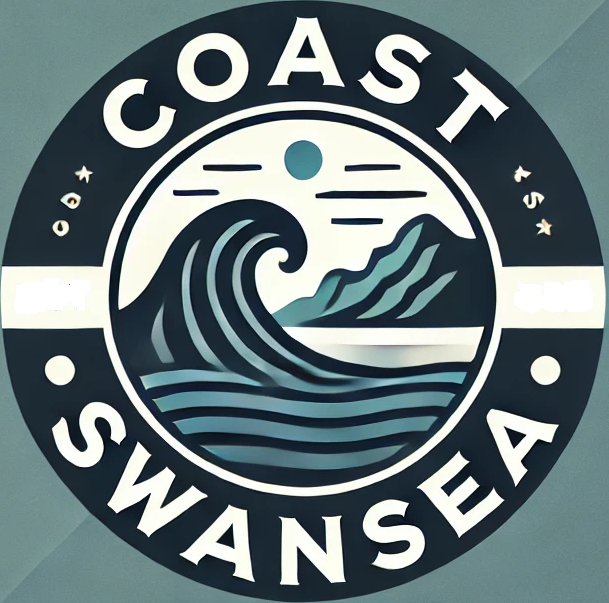Coasteering is an exhilarating activity that combines swimming, climbing, scrambling, and jumping along the coastline. Swansea Bay and the Gower Peninsula.
With Its rugged cliffs, hidden coves, and crystal-clear waters, Swansea Bay and the Gower coastline offer the perfect backdrop for an adventurous coasteering experience. This guide will help you plan the ultimate coasteering trip in Swansea Bay and Gower.
Known for its breathtaking rock formations and stunning scenery, Three Cliffs Bay is an excellent spot for beginner and intermediate coasteering. The bay offers sheltered areas and various low and medium-height jumps.
For those seeking a more challenging experience, Rhossili Bay and the surrounding Worm’s Head area provide opportunities for higher jumps, complex scrambles, and exploration of sea caves. These routes are best for more experienced coasteerers.
This area is great for mixed-ability groups, offering a variety of routes that include moderate jumps, climbs, and swims. It’s perfect for those looking for an adventure that’s challenging but not overwhelming.
Caswell Bay’s calm waters and accessible cliffs make it a good location for beginner coasteering. It’s a great spot for families or those trying the activity for the first time.
A highly rated provider known for its knowledgeable guides and scenic routes around the Gower. Their instructors are trained to prioritize safety while making the experience enjoyable and adrenaline-packed.
Offers coasteering tours that cater to all skill levels, focusing on fun and exploration. They provide high-quality safety gear and take participants through some of the most striking parts of Swansea Bay.
Specializes in advanced coasteering routes, including high jumps and challenging scrambles. Their guides are well-versed in the local terrain and marine life, making the tours both exciting and informative.
Booking Tips
Plan your coasteering adventure by booking in advance, especially during peak summer months. Check for weather forecasts and choose a tour that suits your skill level. Many providers offer online booking options for added convenience.
Additional Activities
Combine your coasteering day with a hike along Gower’s stunning coastal paths or visit a local café for a well-deserved treat. Swansea Bay and Gower are full of activities that complement a day of adventure, from beach relaxation to scenic photography.
Packages and Discounts
Some providers offer group packages or family discounts, which can make your coasteering experience more affordable. Check for seasonal promotions to make the most of your visit.
Beginner Coasteering Tours
Designed for those new to coasteering, beginner tours provide an introduction to the basic techniques and safety measures. Guided by experienced instructors, participants can enjoy a mix of climbing, scrambling, and safe jumps in more sheltered areas.
Intermediate Coasteering Adventures
For those who have tried coasteering before and are ready for a greater challenge, intermediate tours include higher jumps, deeper water routes, and more challenging climbs. These sessions require a bit more stamina and confidence.
Advanced Coasteering Experiences
Perfect for thrill-seekers, advanced tours feature more demanding routes, including high cliff jumps, dynamic water movements, and complex scrambling sections. These experiences are tailored for individuals with strong swimming skills and a good fitness level.
Group vs. Private Tours
Group tours are perfect for friends and families looking to share an adventurous experience. Private tours offer a more customized experience, allowing participants to tailor the route and pace to their preferences.
Best Time of Year for Coasteering
Summer and late spring are the best times to enjoy coasteering, with warmer water temperatures and calmer sea conditions. Early autumn also offers good conditions with fewer crowds. Winter coasteering is only recommended for experienced individuals with proper gear and guidance due to colder water and rougher seas.
Weather and Safety Considerations
Always check the weather and tide schedules before heading out. Strong winds, rough seas, and changing tides can affect the safety of your route. It’s essential to coasteer with a guide who understands local conditions and safety protocols.
Lorem ipsum dolor sit amet, consectetur adipiscing elit. Ut elit tellus, luctus nec ullamcorper mattis, pulvinar dapibus leo.
What to Bring
Standard gear for coasteering includes a wetsuit, buoyancy aid, helmet, and sturdy shoes with good grip. Some providers may supply all necessary equipment, so check in advance. Optional items include a towel, a change of clothes, and a waterproof bag for valuables.
Preparation Tips
Ensure you’re in good physical condition, as coasteering requires a combination of swimming, climbing, and jumping. Familiarize yourself with basic safety techniques and listen carefully to your guide’s instructions. Always conduct a safety check of your gear before starting.
Sustainability and Eco-Friendliness
Respect the natural environment by not disturbing wildlife or damaging rock formations. Choose a provider that practices eco-friendly coasteering and promotes the protection of the coastline. Leave no trace by picking up any waste and minimizing your impact on the environment.
Rules of the Water
Always listen to your guide and follow their instructions. Avoid reckless jumps and ensure the area below is clear before taking any leap. Stay with your group and communicate regularly to maintain safety.
Safety Guidelines
Coasteering can be unpredictable, so always wear a helmet and buoyancy aid. Only jump from heights that you are comfortable with and have been approved by your guide. Always coasteer with a certified guide or experienced leader, and never attempt coasteering alone.
